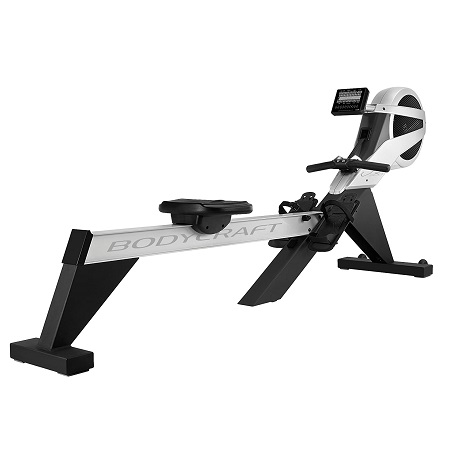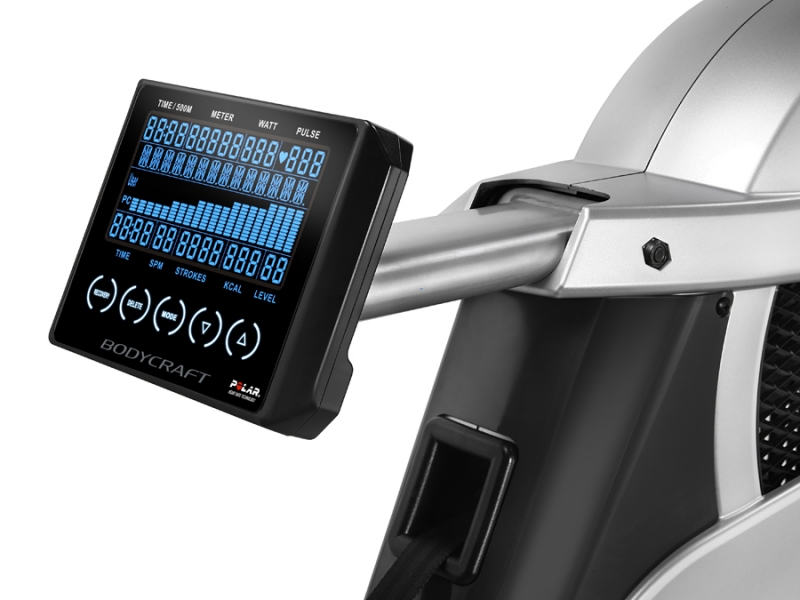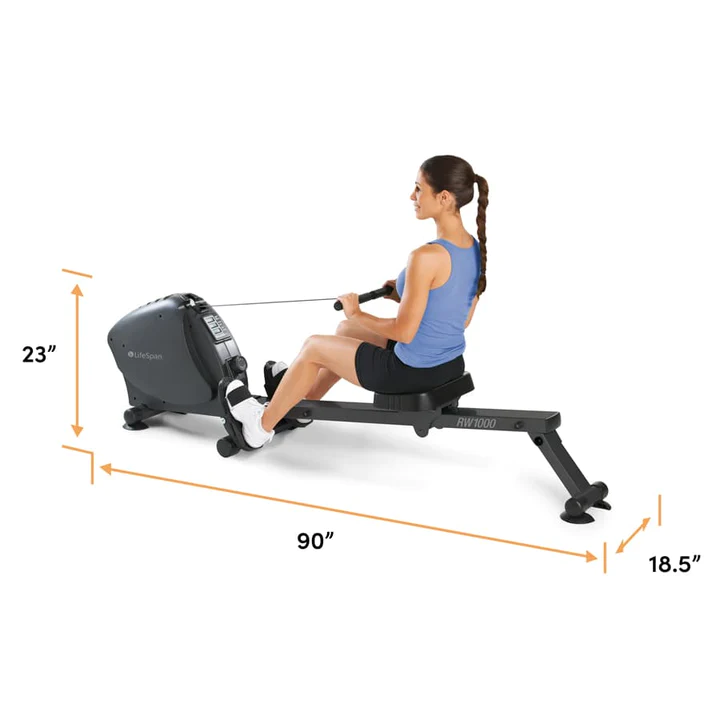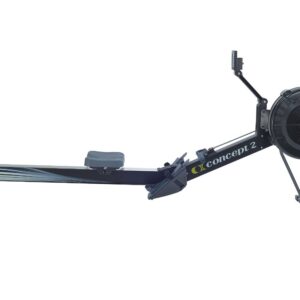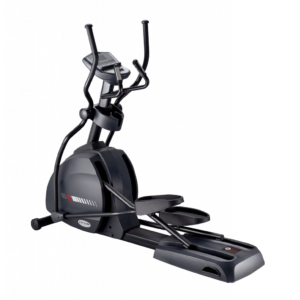Although the Concept2 Model D leads the competition among indoor rowers, Body Craft (the company) has gone ahead and positioned itself as a “premium among premium” brands. Its top-of-the-line rowing machine is pegged at a much higher price point than both the Model D and the Water Rower Natural.
The Body Craft VR500 uses a combination of air and magnetic resistance to provide intensity. Just like the Concept2 Model D and Model E, it uses an air flywheel to provide resistance. However, unlike the former, the VR500’s flywheel becomes more difficult to spin when the blades slow down.
How do they slow down? They do that thanks to magnetic resistance. The rower has electromagnets attached to the blades that act as a braking system. When this happens, you are forced to use greater effort to keep the flywheel spinning as fast as it used to. That’s how you increase resistance in the VR500.
All this uses what Body Craft calls eddy currents. This is the same technology used in the braking systems of high-speed trains and rollercoasters. We’re not electrical engineers here, so bear with us while we attempt to explain this concept.
The electromagnets on the flywheel create a magnetic field. When you change the resistance by pressing a button on the rower’s handlebar, the rower generates eddy currents (swirling currents) that interact with the magnetic field. This causes the blades to slow down.
The faster the blades are spinning (meaning the less resistance you use), the stronger the effect of the interaction becomes. So when the flywheel starts to slow down, the braking force also slows down. In practical terms, this leads to a smooth, fluid transition from one resistance level to the next.
So what does this all mean for the person who doesn’t have a degree in engineering? The most important lesson here is this: On the Bodycraft VR500, the resistance will always remain the same.
It will not increase when you pull harder nor decrease when you slacken your pace. Your body is always subjected to a consistent level of resistance all throughout your workout, unless you decide to take it up or down a notch. Other rowers, such as the Stamina Avari, have also taken the route of magnetic resistance instead of following in Concept2’s footsteps.
There are 32 levels of resistance on the VR500. To go up and down on those levels, you simply have to press some buttons on the handlebar. This will create the eddy currents that will interact with the magnetic field to slow the flywheel down.
So, is this better than self-regulated resistance? Not necessarily, but it isn’t necessarily worse either. For one thing, the 32 levels of resistance on the VR500 are not really comparable to the resistance of self-regulated machines.
On the latter, you control your resistance in every single stroke. You can go as low as a Level 1 to a Level 60 or Level 600, which both don’t exist on the VR500, though we imagine most people won’t ever need to go beyond a resistance level of 32.
The fixed resistance levels have their advantages, too. Since your body is subjected to the same intensity level all throughout the exercise, you’re not forced to consciously check the resistance all the time. This means there is practically no room for momentum to take over. That tends to happen on a self-regulated rower, but not on the VR500.
This will force you to keep your form and technique in tip top shape all the time. On other rowers, you could find that momentum soon gets some of the work done and it’s too easy for you to pull with your arms more than your legs. As we’ve discussed in this article, that’s not a good thing because you want to drive with 60% of your power coming from your legs, where the biggest muscles in the body are.
On the other hand, self-regulated resistance rowers can enhance your mental focus, since you have to constantly remind yourself to drive back with the same intensity and proper form. In this regard, We wouldn’t call one rower better than the other. The VR500 can offer you a similarly grueling full-body workout even though resistance is not the same.
What may be a turn-off for some, though, is that the VR500 is nowhere near mimicking the feel of rowing on real water, despite BodyCraft’s claims of such. Such a consistency of resistance found in the VR500 will never have its counterpart in nature.
But then again, it’s because of the combination of air and magnetic resistance that makes this rower whisper quiet. It’s so silent you practically won’t hear a thing coming from the flywheel. If you like to watch TV, listen to music, or have conversations while exercising, or if you simply live with people who can’t be bothered with noise coming from an exercise machine, the VR500 won’t be a hindrance at all.
The Bodycraft VR500 has a heavy-duty I-beam monorail that makes it ideal for heavy home use and light commercial use.
The rail itself has 56 inches in length, allowing most people to be able to fully extend their legs on the rowing machine. This translates to a maximum in-seam of 39 inches. This is the average in-seam for people who are 6 ft., 6 in. in height. Unfortunately, if you’re taller than that, there’s no option to buy an extra-long rail for the VR500.
On top of the rail is the signature seat of the rower. For many fans of Body Craft, this is what separates the VR500 from the rest. If you’re not a fan of the hard, uncomfortable seats of other rowers – and the ugly blisters and callouses that will inevitably develop in the most horrific places – the VR500 is what you’re looking for.
It has a huge, contoured seat that keeps your butt in place. This prevents it from rubbing up and down or sideways on the seat as you move forward and back during the stroke. The steadiness is what prevents you from getting blisters.
Underneath the seat is a set of heavy-duty roller bearings larger than those on the Concept2. These contribute heavily to the butter-smooth, quiet operation of the VR500, aside from the nylon drive strap that makes no clanging sounds that a metal chain would.
The nylon strap has just enough spring tension to give your hamstrings a lot of work when you’re moving forward at the recovery. Over the drive strap is a lightweight handlebar made of aluminum. The handles are tilted slightly downwards for a more natural wrist position – straight, even at the end of the drive.
The handlebar also houses the remote control for resistance, which lets you change the resistance level even in mid-stroke. When you’re using the rower, keep in mind to always place the handlebar on the handle holder once you stop using it. Letting go of the handles while in mid-air can damage the nylon strap and will possibly void your warranty as well.
Below the handlebar, you can find the heel rests. These are adjustable with up to six settings, each of them able to accommodate a variety of foot sizes. The foot straps go over the ball of your feet. They have buckles that you can move to adjust the tightness around your feet.


